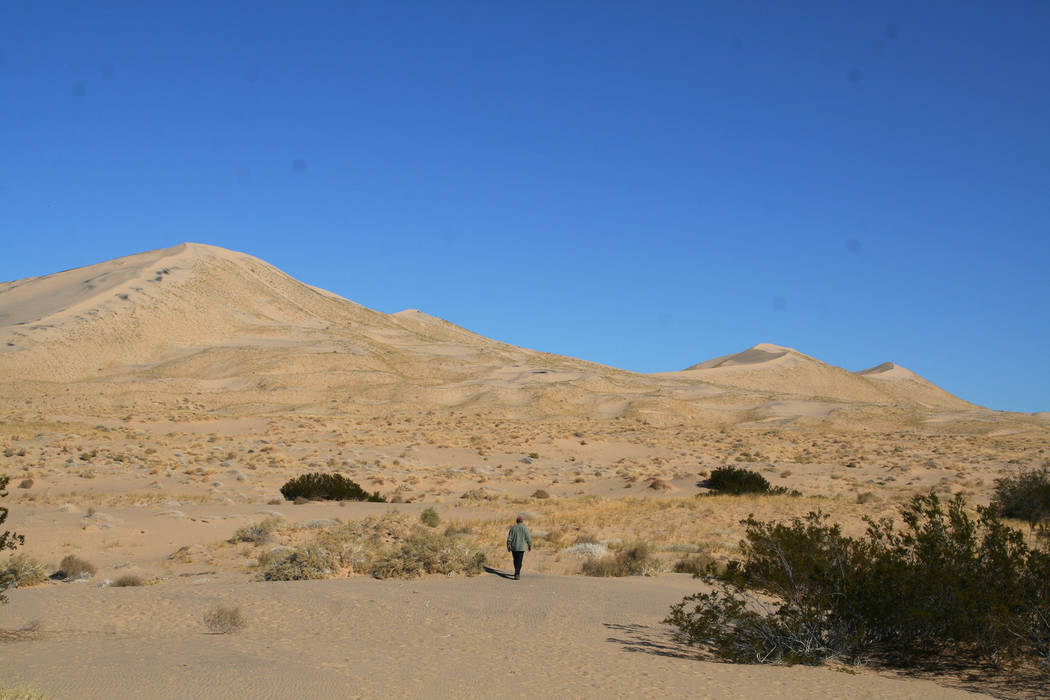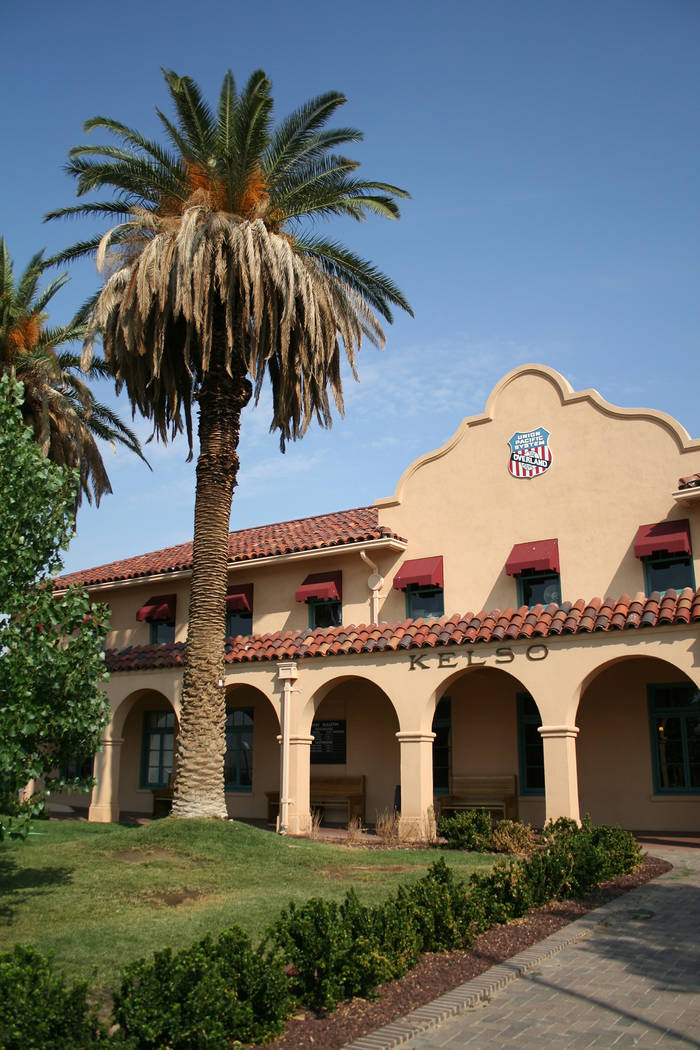Deborah Wall: Kelso Dune complex is among North America’s largest


Most people who did not grow up in the Mojave Desert were probably surprised to learn how few sand dunes are found here. The vast, flat landscapes of desert pavement and creosote were not remotely what we had envisioned.
But one place that does match the great, graceful sandpiles of our imaginations lies less than two hours from Las Vegas, in the 45-square-mile Kelso Dune complex. People of all ages seem to enjoy it, but it’s particularly a good outing for energetic children.
The Kelso Dunes are part of the Mojave National Preserve, and your route there takes you by the historic Kelso Depot. You should make it a point to stop and visit, allowing a minimum of half an hour for the visit.
Starting in 1905, this railroad station’s function was to provide essential water for steam engines and a place to hitch on additional engines for the long, steep grade to the east. When the present depot was built in the 1920s, it was made charming in appearance because the railroad was competing fiercely for passengers with the Santa Fe, whose roughly parallel route lay a few miles to the south. Continuously improving diesel engine technology gradually eliminated the first two needs, and travelers’ growing preference for airlines made the third largely irrelevant. One of the last of the “whistle stop” stations operated by Union Pacific Railroad, it closed in 1985.
Regional history buffs and preservationists managed to prevent the station’s demolition, and after the Mojave National Preserve was created in 1994, the National Park Service completed its restoration and adaption as a visitor center for the preserve. Here you’ll find an old-time ticket office, a baggage room and two dormitory rooms formerly used by railroad workers, with historically correct furnishings to show what life was like at one of the West’s most remote railroad towns.
Continuing 10 miles to the south, you’ll come to the Kelso Dunes themselves, at 2,610 feet in elevation at the parking area. They’re the third-tallest dune complex in North America.
Delicate plants grow at the base of the dunes — some rare and even some found nowhere else on earth — so don’t trample any. But once you’ve climbed beyond the narrow belt of growing things, you can climb and cavort at will. This is what makes it so good for children; it’s one big sand pile, capable of absorbing all the energy they wish to expend on it. They tend to eventually discover the joy of rolling down the slope like so many logs, which fills the clothes with sand, but the head with treasured memories. Of course, less-energetic adults may merely relax and read the interpretive signs, secure in the knowledge even an accident-prone young ‘un will have a hard time hurting himself on a big sand pile.
These are among the few dunes in the world known to “sing” or ‘boom” as the sands rearrange themselves. Some say the sound resembles a distant airplane motor, or freight train; others compare it to the low note of an organ. How the sands make the noise is not fully understood, but it happens only when moisture content is just right. If it happens when you’re there, you should be able to hear it, for no sand buggies or other noisy motor vehicles are allowed on these dunes.
Deborah Wall is the author of “Great Hikes, A Cerca Country Guide” and “Base Camp Las Vegas: Hiking the SouthwesternStates,” published by Stephens Press. She can be reached at deborabus@aol.com.
Directions
From Las Vegas take I-15 south about 50 miles. Exit onto Nipton Road and go east 4 miles. Turn right onto Ivanpah Road for 3.1 miles. Go right onto Morning Star Mine Road and travel about 15 miles to Cima. Here, at the railroad tracks, the road becomes Kelso/Cima Road. Continue about 19 more miles to Kelso Depot, on your left.
Preparing to visit
No gasoline, food or other supplies are sold in Kelso Dune Complex, so buy what you need before entering. The closest sources are in Primm and Baker, Calif. The Kelso Depot Visitor Center is open from 10 a.m. to 5 p.m. daily, except Christmas. For more information, call 760-252-6108 or go to nps.gov/moja.













